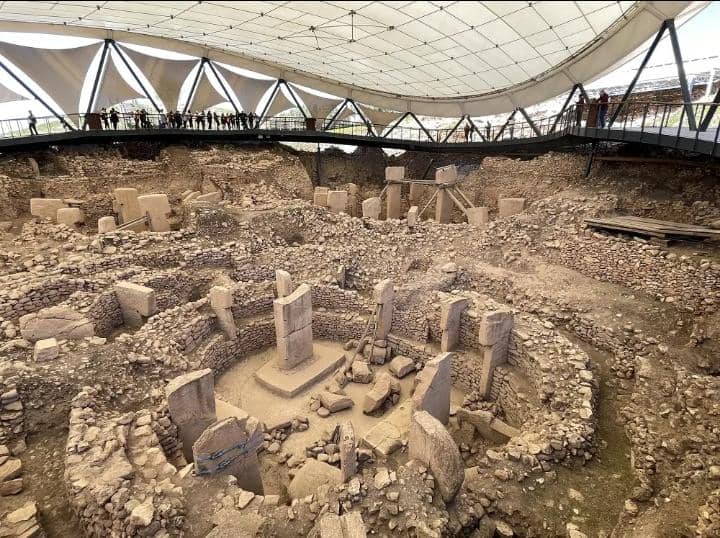Göbekli Tepe, located in southeastern Turkey near the city of Şanlıurfa, is considered the oldest known temple complex in the world. Dating back to around 9600-8200 BC, this archaeological site predates Stonehenge by over 6,000 years and the Egyptian pyramids by over 7,000 years, making it a remarkable testament to the ingenuity and spiritual life of early human societies.
The site consists of several large circular and oval structures, each built from massive limestone pillars that stand up to 6 meters (20 feet) high and weigh several tons. These pillars are arranged in a series of rings, with some connected by stone walls.
The central pillars in each ring are often larger and more elaborately decorated than the peripheral ones. The carvings on the pillars include depictions of animals such as lions, snakes, foxes, and birds, as well as abstract symbols, considered some of the earliest examples of symbolic art.
Göbekli Tepe is believed to have been a site for religious or ceremonial activities, given its monumental scale and the absence of evidence for permanent habitation. It is thought that hunter-gatherer groups from the surrounding regions gathered at Göbekli Tepe for communal and ritualistic purposes. The site’s significance extends beyond its age and architectural complexity; it challenges previous assumptions about the development of human society, suggesting that the desire for communal religious activities may have played a significant role in the development of settled communities and the advent of agriculture.
Excavations at Göbekli Tepe, led by German archaeologist Klaus Schmidt, have uncovered a wealth of information about the site’s construction and function. Schmidt’s work revealed that the pillars were quarried locally and that the communal effort involved in this endeavor must have involved hundreds of people at a period when most social groups had no more than 25 members.
This suggests a high level of social organization and cooperation among the site’s builders.
Today, Göbekli Tepe is a UNESCO World Heritage Site and has become a significant attraction for tourists and researchers alike. Efforts are ongoing to preserve the site while allowing for continued archaeological exploration.
The Turkish government, in collaboration with international organizations, has implemented measures to protect the site from environmental and human-induced damage. Göbekli Tepe stands as a testament to the ingenuity and spiritual life of early human societies, inspiring and challenging our understanding of prehistoric cultures and the development of human civilization.

